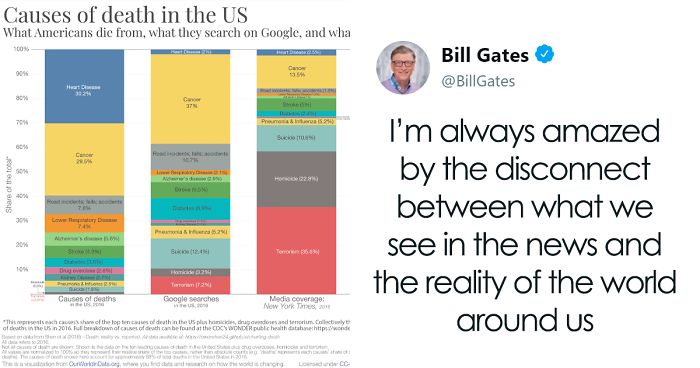
Bill Gates Posts Data Of Causes Of Death In The US, Is Amazed By The Disconnect Between News And Reality
Bill Gates has 47.4 million Twitter followers, so when he tweets something, it gets noticed. Recently, the billionaire Microsoft founder has directed everyone’s attention towards an issue he’s been seeing for a while. The media isn’t accurately reflecting what we’re dying from, and Mr. Gates thinks this disconnect shows that the news is trying to spin a story instead of addressing the real causes of death.
More info: Twitter
The media isn’t accurately reflecting what we’re dying from
Image credits: BillGates
The statistical graphs that Bill Gates tweeted comes from a project, titled Death: Reality vs. Reported, by students of the University of California San Diego. The researchers attempted to answer these questions: how do people die, how do people think they die, and is there a difference. To get some answers, they set out to investigate if there’s a disconnect between what one sees in news sources and the real ugly truth.
For their project, the students look at four sources: The Center for Disease Control’s WONDER database for public health data (1999-2016), Google Trends search volume (2004-2016), The Guardian’s article database, and The New York Times’ article database. “For all of the above data, we looked at the top 10 largest causes of mortality, as well as terrorism, overdoses, and homicides, three other causes of death which we believe receive a lot of media attention,” they wrote. For each, the relative share of deaths, share of Google searches, and share of media coverage, were calculated.
Actual causes of death vs. Google search trends for causes of death
Image credits: ourworldindata
“Immediately, we can see that terminal illnesses like cancer and heart disease take up a major chunk of all deaths, each responsible for around 30% of the total death count,” the researchers wrote. “On the graph, everything is visible except for terrorism, which is so small it doesn’t show up unless we zoom in.”
Next, the Google Trends data. “The two major changes here seem to be that heart disease is underrepresented, and terrorism is very much overrepresented. Suicide also looks like it has several times more relative share here than compared to the actual death rate. The rest of the causes look like they’re within the right order of magnitude as the CDC data.”
Actual causes of death vs. death coverage in the media (The Guardian)
Image credits: ourworldindata
Actual causes of death vs. death coverage in the media (New York Times)
Image credits: ourworldindata
“Here, we see that terrorism, cancer, and homicides are the causes of death that are most mentioned in the newspapers. Though the share that cancer occupies seems largely proportional, the share given to both homicides and terrorism appears grossly overrepresented, given their respective share of total deaths.”
“After looking at our data, we found that, like results before us, the fake news given by media outlets and Google searches does not match the actual distribution of deaths,” they concluded. “This suggests that general public sentiment is not well-calibrated with the ways that people actually die. Heart disease and kidney disease appear largely underrepresented in the sphere of public attention, while terrorism and homicides capture a far larger share, relative to their share of deaths caused.”
People had a lot to say about this
Image credits: ZacksJerryRig
Image credits: bradleyvoytek
Image credits: robertchihade
Image credits: elonmusk
Image credits: jmeisenberg
Image credits: DrPyanco
Image credits: mohtab
398Kviews
Share on FacebookKing of fear and distrust must be Hitler and now trump. So scared of the "others" you'd follow them.
Load More Replies...Media companies are heavily involved in politics, so their stories will reflect things that further the interests of their goal. On top of that, sensational stories sell. So you're slowly seeing certain rights or laws changing, all because people are just to dumb to vote with their brain most of the time.
Yep. The Sinclair Group owns everything. It's frightening.
Load More Replies...King of fear and distrust must be Hitler and now trump. So scared of the "others" you'd follow them.
Load More Replies...Media companies are heavily involved in politics, so their stories will reflect things that further the interests of their goal. On top of that, sensational stories sell. So you're slowly seeing certain rights or laws changing, all because people are just to dumb to vote with their brain most of the time.
Yep. The Sinclair Group owns everything. It's frightening.
Load More Replies...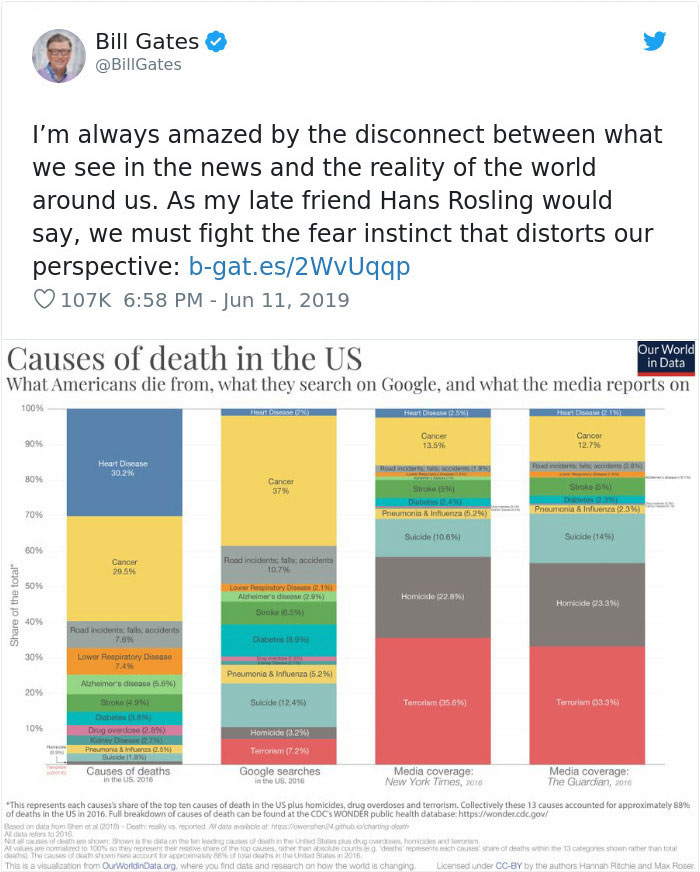
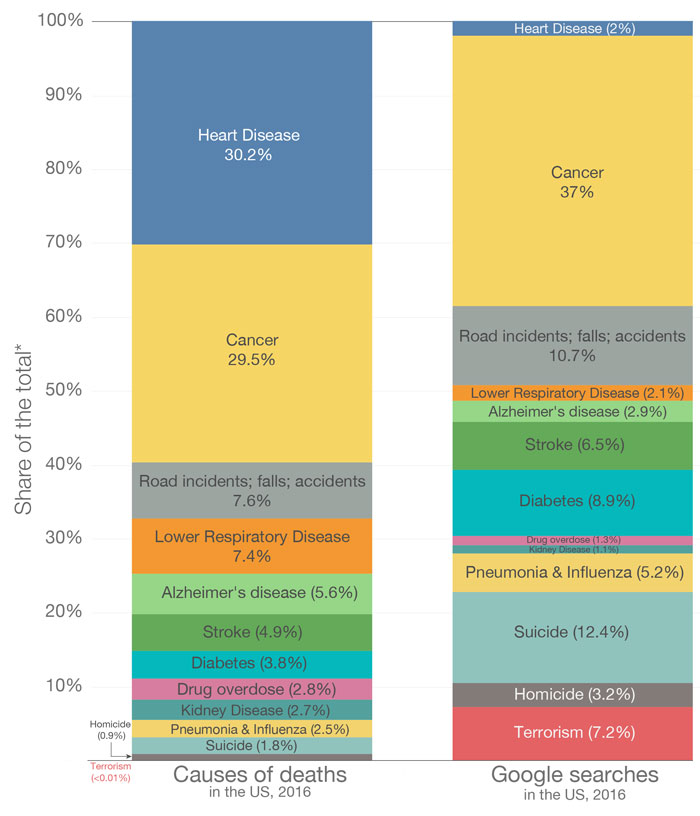


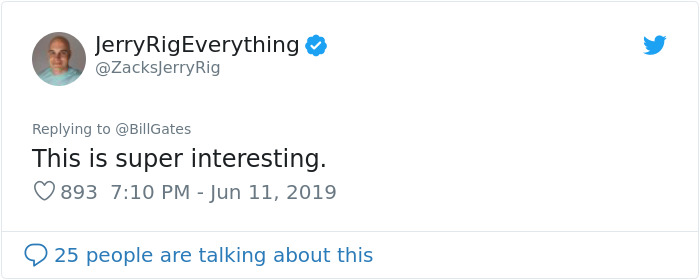
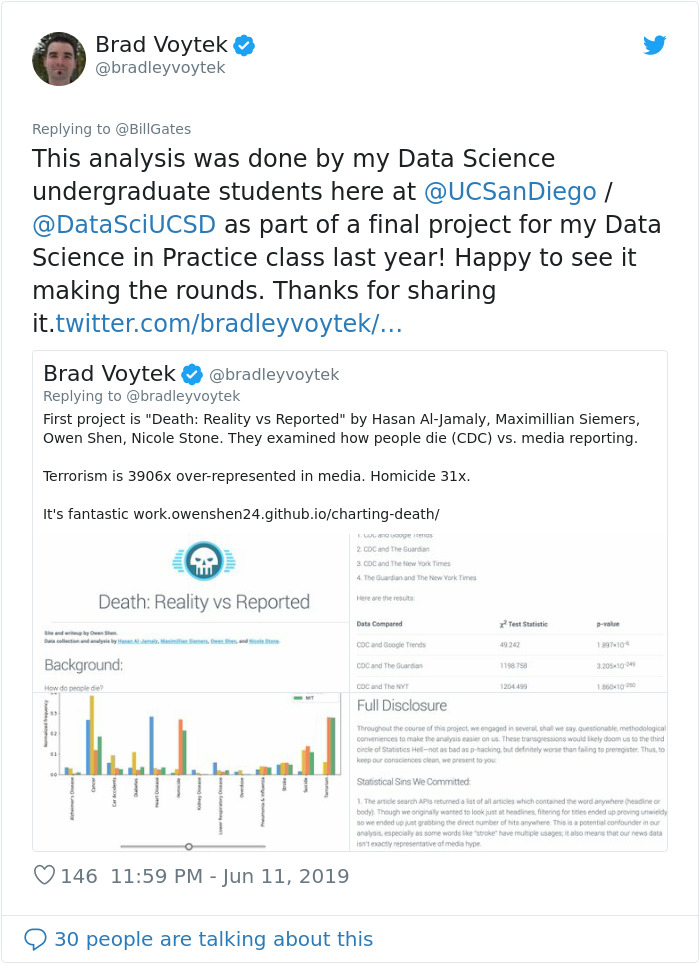
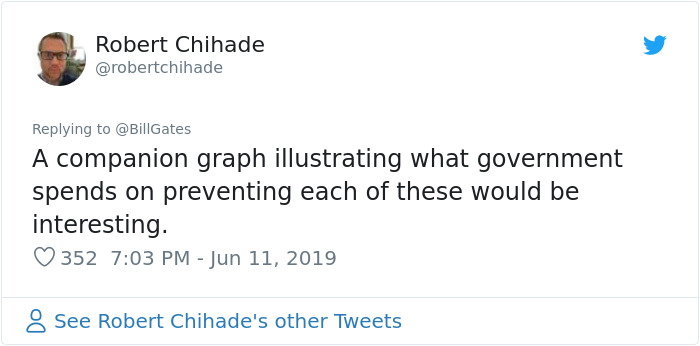
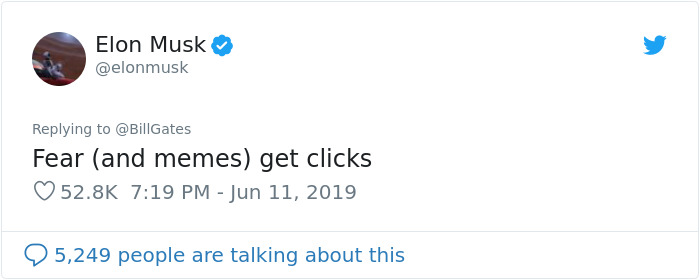
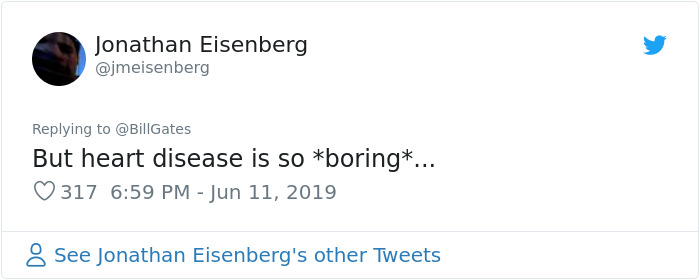
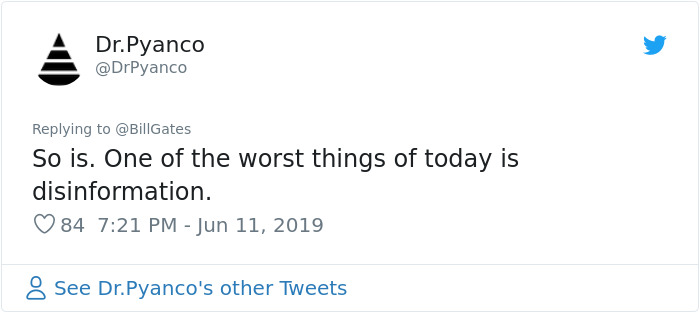














340
123